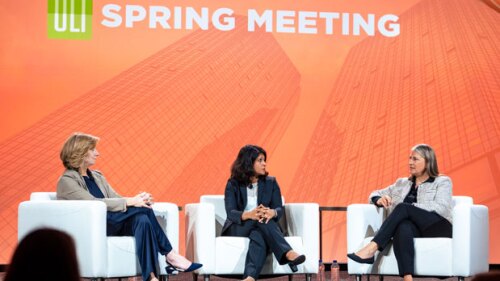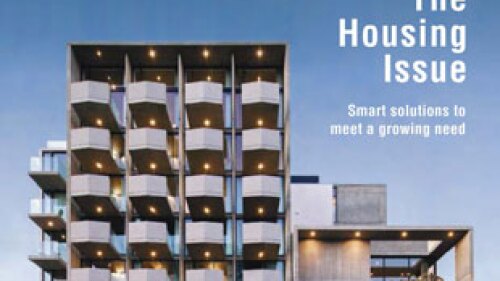A new federal transportation bill is unlikely before 2012, predicted a transportation expert at the industry roundtable session on transportation trends at ULI’s Spring Council Forum in Phoenix, Arizona. At the same time, another expert suggested local governments across the United States are becoming increasingly sophisticated and innovative at using local financing tools to fund transit investments, including streetcars.
Joshua Schank, research fellow at the Bipartisan Policy Center and president and CEO of the Eno Transportation Foundation in Washington, D.C., and William Lee, executive vice president with AECOM in San Francisco, spoke in Phoenix on a panel moderated by ULI’s managing director for infrastructure, Rachel MacCleery.
Federal transportation authorization
Prospects for federal transportation reauthorization are dim for a variety of reasons, including the sense among many members of Congress that the transportation program is no longer serving a national purpose. No consensus, however, has emerged about how the program should evolve, what the goals of the program should be, how performance should be measured, and how to tie funding to performance. The size of the program, and how it should be funded, are also unresolved issues. Competing proposals from the Obama administration and Congress reflect the ongoing uncertainty.
The administration has presented a vision for a greatly expanded federal program, with spending levels about double that of the old bill (SAFETEA-LU), new trust fund configurations, and an ambitious rail agenda. However, the administration’s proposal offered no suggestions on where new revenue should come from, and White House and U.S. Department of Transportation officials have indicated repeatedly elsewhere that a gas tax increase is off the table. In the House of Representatives, Congressman John Mica (R-FL) is putting together a bill that would effectively cut transportation spending by limiting expenditures to existing revenues.
Schank suggested that the impasse won’t be broken until voices outside of the traditional transportation interests—which include state departments of transportation and the freight industry—join the chorus calling for a reformed program. In particular, what he called an impending “era of austerity” could actually be an opportunity to insist on measures that make sure resources are spent more effectively, and that limited federal resources are leveraged to the maximum extent possible by rewarding higher matches from state and local governments, eliminating barriers to tolling, and other measures.
Streetcar funding approaches
Taking the conversation down to the local level, Lee reviewed financing approaches for new streetcar systems in nearly a dozen cities—including Seattle, Washington; Tempe, Arizona; and Salt Lake City, Utah; and others—across the country. These modern streetcars are being built using a variety of funding methods, some traditional and others innovative.
Seattle is using one of the more innovative approaches Lee explored. About half of the $52 million capital costs for the city’s South Lake Union Line streetcar project will be provided by property owners adjacent to the system through a local improvement district (LID), with the remaining costs being borne by the federal, state, and local government. Private sponsorship opportunities for the line and stations will account for about 25 percent of operating expenses.
Other approaches are more traditional. In Arizona, the Tempe Streetcar’s $163 million capital costs will be provided by a mix of regional tax revenue from an approved bond measure and a matching grant from the Federal Transit Administration’s New Starts Program. The system’s annual $3.1 million operating costs will be the responsibility of the city. Salt Lake City’s $56 million Sugar House Streetcar line received a hefty grant from the U.S. Department of Transportation’s TIGER II program that will cover 70 percent of the project’s capital costs. Despite a $5 million commitment from area governments, however, the line still faces a shortfall in local funding.
Local funding approaches, Lee said, are aiming both to raise money for system construction and operation, and also to more fairly allocate the cost burden to the project’s potential beneficiaries. Projects that rely on transit benefit assessment districts, such as the one in Seattle, must address issues including defining who the beneficiaries are, identifying the level of benefit they receive, timing the assessment, and ensuring that there is legislation to enable the district. To date, experience with benefit assessment districts is limited in the United States, but more cities are expected to turn to them to fund the projects they want to build.
Conclusion
Across the country, cities and stakeholders seeking to build new streetcar and light-rail systems are utilizing a variety of funding methods—old and new, traditional and innovative—to put together the funding necessary to build and operate the lines. All of this is playing out against a backdrop of uncertainty at the national level about the size and direction of the federal transportation program—uncertainty that is unlikely to be resolved in the near term.



